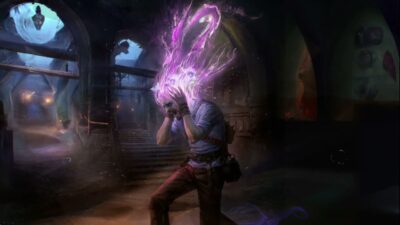dissonant whispers 5eIn the vast and mystical world of Dungeons & Dragons 5th Edition (5e), spellcasting is an essential skill that can turn the t
dissonant whispers 5eIn the vast and mystical world of Dungeons & Dragons 5th Edition (5e), spellcasting is an essential skill that can turn the tide of battle and shape the course of adventures. Among the many spells available to bards, warlocks, sorcerers, and wizards, Dissonant Whispers stands out as a uniquely strategic and thematic enchantment. This 1st-level enchantment offers a potent mix of psychic damage and forced movement, enabling spellcasters to disrupt enemy formations and control the battlefield in creative ways.
In this article, we’ll explore everything you need to know about Dissonant Whispers — from its mechanics and tactical uses to thematic implications and character builds. Whether you’re a new player looking to understand your options or a seasoned Dungeon Master (DM) seeking to leverage this spell in your campaigns, this guide covers it all.
What is Dissonant Whispers?
Dissonant Whispers 5e is a 1st-level enchantment spell introduced in the Player’s Handbook (PHB). It is known for its distinctive ability to inflict psychic damage and compel a target to flee, creating immediate tactical advantages.
- Spell Level: 1st
- Casting Time: 1 action
- Range: 60 feet
- Components: Verbal
- Duration: Instantaneous
- Classes: Bard, Sorcerer, Warlock, Wizard
Spell Description and Mechanics
When you cast Dissonant Whispers, you whisper a discordant melody only the target can hear, wracking their mind with painful, dissonant thoughts. The target must make a Wisdom saving throw. On a failed save, the target takes 3d6 psychic damage and must immediately use its reaction to move as far as possible away from you. The movement provokes opportunity attacks if the target moves out of reach of other creatures. If the saving throw is successful, the target only takes half damage and doesn’t have to move.
When cast using a spell slot of 2nd level or higher, the damage increases by 1d6 for each slot level above 1st.
Tactical Advantages of Dissonant Whispers
1. Battlefield Control Through Forced Movement
Dissonant Whispers uniquely combines damage with forced movement. This is rare for a 1st-level spell, making it an excellent option for controlling enemy positioning without requiring complicated maneuvers. By forcing a creature to flee, you can:
- Break enemy ranks.
- Force opponents out of cover or advantageous positions.
- Separate enemies from allies, making them easier targets.
- Protect vulnerable allies by moving enemies away.
2. Triggering Opportunity Attacks
Since the target must use their reaction to move away, this movement can provoke opportunity attacks from your allies. This synergizes well with frontline melee characters who can capitalize on the forced retreat to deal extra damage.
3. Psychic Damage
Psychic damage is one of the least resisted damage types in D&D 5e. Many creatures that are immune or resistant to fire, cold, or physical damage still take full damage from psychic attacks. This makes Dissonant Whispers a reliable offensive tool against a variety of foes.

When to Use Dissonant Whispers
Dissonant Whispers shines best in situations where controlling enemy movement is crucial:
- Against Single Targets: Use it on a dangerous melee enemy to force them away from your party’s squishier members.
- To Protect Ranged Allies: Forcing enemies to move away from your ranged attackers can help keep those characters safe.
- To Disrupt Enemy Formations: If your party faces clustered enemies, Dissonant Whispers can scatter them, breaking coordinated attacks.
- In Ambushes or Stealthy Approaches: The spell is verbal only and instantaneous, making it useful when quick disruption is needed without alerting others.
Synergies with Classes and Builds
Bards
Bards, with their wide spell lists and support capabilities, make excellent users of Dissonant Whispers. At 3rd level, the College of Lore Bard can add cutting words to reduce enemy attacks, then follow up with Dissonant Whispers to make foes flee, protecting allies or setting up crowd control.
Warlocks
Warlocks can combine Dissonant Whispers with their Eldritch Invocations to maximize damage or utility. Using higher-level spell slots from Pact Magic and taking the Agonizing Blast invocation for Eldritch Blast enhances overall battlefield control.
Sorcerers
Sorcerers can use metamagic options such as Twinned Spell to target two enemies with Dissonant Whispers, doubling the spell’s battlefield disruption. Quickened Spell allows casting it as a bonus action, giving additional flexibility in combat.
Wizards
Though not a primary spell for Wizards, those who pick up enchantment or illusion spells can use Dissonant Whispers to control enemies while setting up other attacks.
Roleplaying and Thematic Uses
Dissonant Whispers is not just a combat spell; it offers rich roleplaying opportunities. The spell is flavored as a haunting, unsettling whisper in the mind of the target. This can be used creatively:
- To intimidate or terrify NPCs.
- As a tool for interrogation or coercion.
- To communicate a cryptic message only the target can hear.
Bards, in particular, can flavor the spell as a haunting tune or unsettling melody, reflecting their artistic nature and mastery of mental influence.
Limitations and Considerations
While Dissonant Whispers is powerful, it has some limitations:
- The spell requires the target to fail a Wisdom saving throw, which can be unreliable against creatures with high Wisdom or saving throw proficiencies.
- The forced movement only happens on a failed save and requires the target to have a reaction available.
- It only affects one target per casting (unless using Twinned Spell metamagic).
- It might not be as effective against creatures immune to psychic damage or mind-affecting spells.
Tips for Dungeon Masters
As a DM, understanding Dissonant Whispers helps you anticipate how players might use it and how monsters might react.
- Use creatures with high Wisdom saving throws or psychic immunity to counterbalance its effectiveness.
- Enemies forced to move might retreat into traps or hazards you have set.
- Remember that forced movement can sometimes disrupt combat flow or cause unintended consequences, like pushing enemies into hazardous terrain.
Example Combat Scenario
Imagine your party faces a formidable orc berserker charging toward your fragile wizard. The bard casts Dissonant Whispers, whispering a discordant melody in the orc’s mind. The orc fails the Wisdom save and immediately uses its reaction to retreat, moving 30 feet away from the bard and provoking a vicious opportunity attack from the fighter standing nearby. The orc’s charge is broken, and your party gains a critical moment to reposition and plan their next move.
Frequently Asked Questions (FAQs)
Q1: Can Dissonant Whispers be cast on an unconscious or incapacitated target?
No. Since the target must be able to hear the whispers and be capable of reacting by moving, unconscious or incapacitated creatures cannot be affected.
Q2: Does the forced movement from Dissonant Whispers provoke opportunity attacks?
Yes. The target uses its reaction to move away, and any movement that leaves the reach of an enemy provokes opportunity attacks as normal.
Q3: Can Dissonant Whispers force the target to move through difficult terrain?
Yes, the target moves as far as possible away from the caster, but it must use its movement to do so. Difficult terrain reduces movement speed, so the target might not be able to move the full distance.
Q4: What happens if the target has no reaction available when hit by Dissonant Whispers?
If the target has already used its reaction that round (for example, for an opportunity attack), it takes the psychic damage but does not move.
Q5: Can Dissonant Whispers be used on multiple targets?
Not normally. The spell targets a single creature, but sorcerers with the Twinned Spell metamagic can target two creatures if both are valid targets.
Q6: Is Dissonant Whispers effective against creatures immune to charm or fear?
Yes. Dissonant Whispers deals psychic damage and forces movement, but it does not impose the frightened or charmed condition, so immunities to those do not apply.
Q7: Does the target move in a straight line directly away from the caster?
Yes. The spell forces the target to use its reaction to move as far as possible directly away from the caster.
Conclusion
Dissonant Whispers is a versatile, flavorful spell that combines damage with battlefield control. Its unique forced movement effect offers strategic value beyond simple damage-dealing, allowing clever spellcasters to protect allies, break enemy ranks, and set up powerful combos. By understanding its mechanics, tactical applications, and thematic potential, players and DMs alike can unlock the full potential of this enchanting spell in their Dungeons & Dragons 5e adventures.
Whether you are weaving a haunting melody as a bard, exploiting psychic vulnerabilities as a warlock, or tactically disrupting enemies as a sorcerer or wizard, Dissonant Whispers deserves a place in your spell repertoire.
Must Visit: spotlightlive




COMMENTS